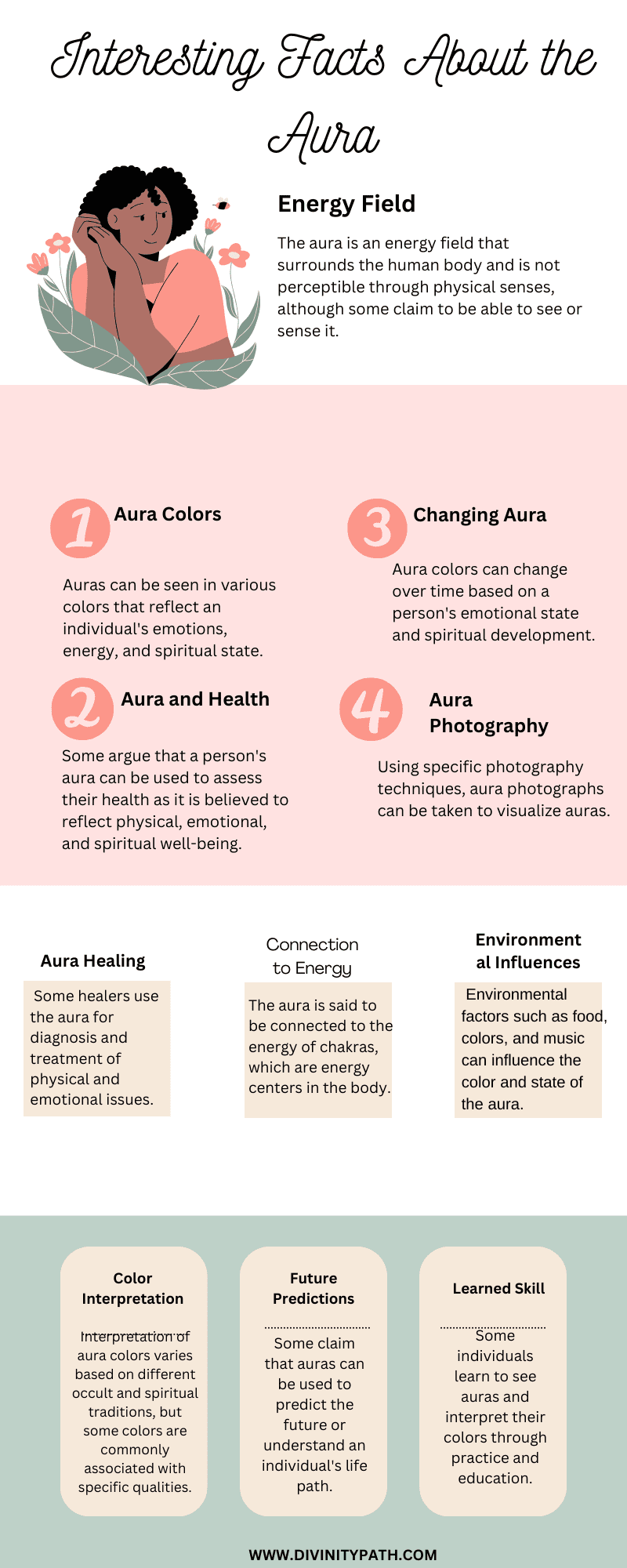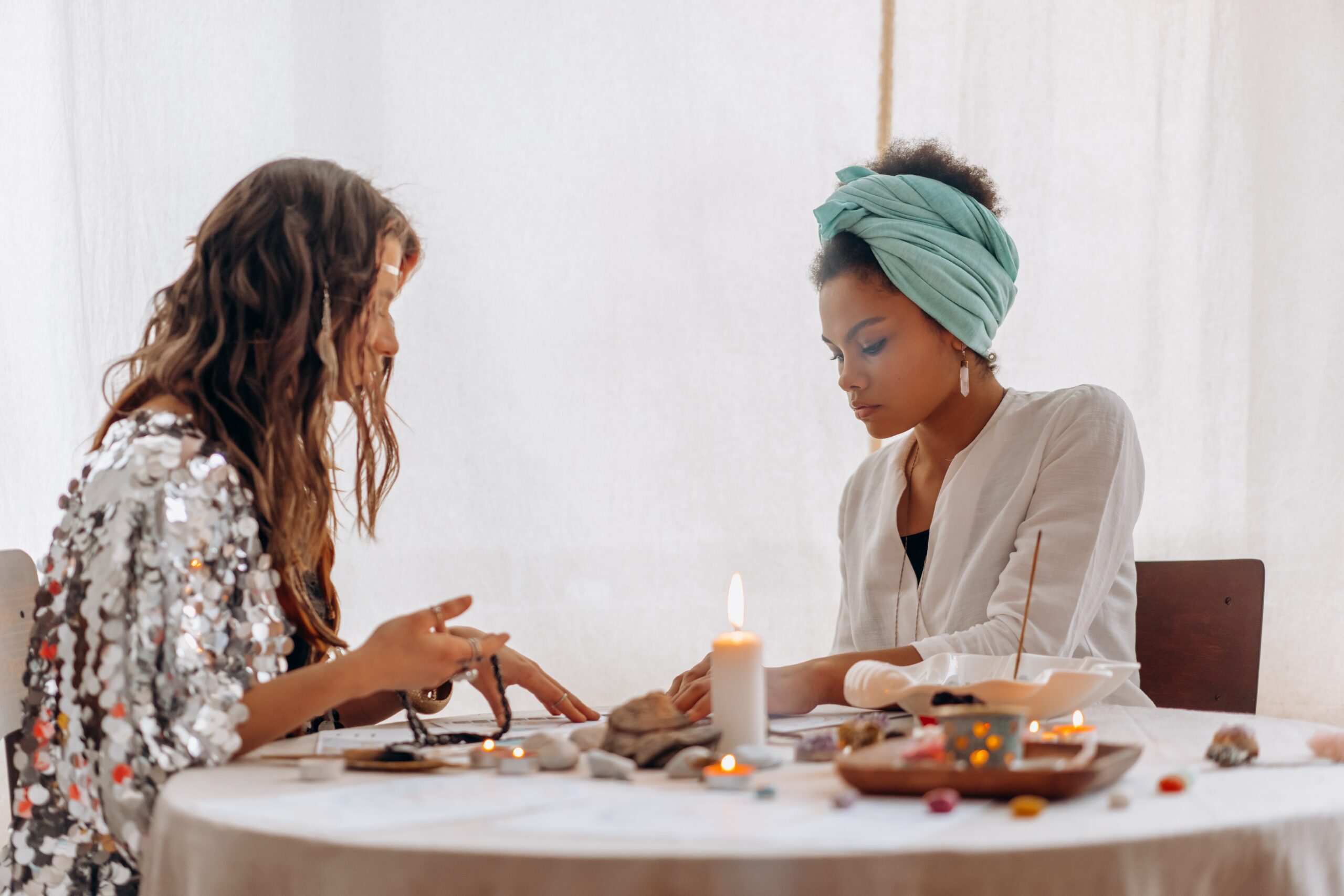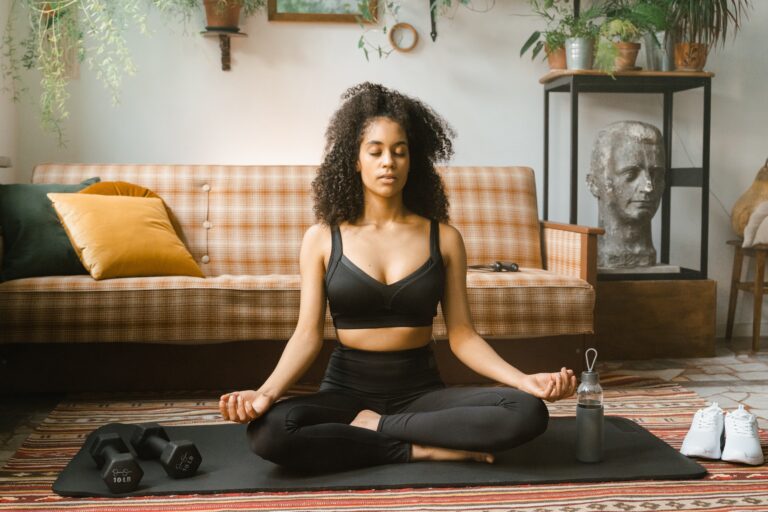How To See, Read, And Understand A Person’s Aura Colors
We all encounter completely new people, but it’s not just a coincidence that with some, we feel completely warm and positive energy, while with others, we feel discomfort and tension. This subtle exchange of energy can be crucial in our interpersonal interactions, but we often aren’t aware of its origin or significance. This is exactly where the concept of aura comes in – an invisible energy field that surrounds every living being and emits a unique vibration that we can feel if we are attentive enough. In this article, we will explore what an aura is, how we can perceive it, and what aura colors can tell us about ourselves and the people we encounter.
To discover the secret of the universe, think in terms of energy, frequency, and vibration.
Nikola Tesla
Understanding the Aura
The aura can be described as an energy field that surrounds every living being. According to aura data, it extends approximately half a meter from the body. Knowledge of the aura dates back to ancient cultures, where it was believed that each person emits a certain energy that can be seen through practice and perception. If we mentioned a decade ago that we see aura colors, we might have been considered eccentric, but today there is increasing evidence that it really exists.
Images of religious figures such as Moses, Buddha, or Christ, all depicted with a glow, with an aura around their heads, so it seems entirely justified that knowledge of the aura dates back thousands of years. But more on the history soon. Metaphysicists believe that aura colors cause vibrations. Vibrations and oscillations are an integral part of nature. We can say that most of what we see and hear is caused by vibrations and waves.

Discover The Incredible Benefits Of Meditation And Its Debunked Myths
Where Does the History of the Aura Lead Us?
The history of aura reading extends across various cultures and traditions. Although the exact origin is not entirely clear, this concept has appeared in various forms throughout history. Ancient Egyptians had the concept of “ka,” similar to aura, representing an individual’s soul or life energy. They believed that this energy was responsible for vitality and well-being. Egyptians also depicted gods and pharaohs with a “halo” or light around them, which could be an early perception of auric fields.
In the Indian tradition, the aura is known as “Prana” or “life force,” which flows through the body and surrounds the individual. This Prana can be sensed and regulated through techniques such as yoga and Ayurveda.
Tibetan Buddhists believe in “Tulku,” the ability of a reincarnated teacher to maintain their aura, which can still be perceived by living people.
Similarly, in Chinese tradition, they perceived energy fields surrounding the body and used them in practices such as Feng Shui to balance energy in the surroundings.
In modern times, the concept of the aura has gained wider recognition with the development of alternative medicine, holistic practices, and spiritual growth.
Today, there are various techniques for working with the aura, including aura therapy, meditation, and Reiki, focusing on balancing and cleansing auric fields for better physical, emotional, and spiritual well-being.
You Too Can See and Read a Person’s Aura
Surely, what interests you most is how you can actually perceive another person’s aura. Some people have this ability from birth, while others can develop it with practice and awareness. One of the most well-known techniques is to concentrate on a person and observe the subtle colors that appear around their body. You should be aware that this may require some practice and focus, but it is achievable.
There are several methods to perceive the color of a person’s aura:
Visualization
One way to perceive the aura is through visualization. While looking at a person, you can imagine them having light or a colored shadow around them. Focusing on this visualization can help in perceiving subtle energy fields.
Relaxing the mind
It’s important to have a relaxed and open mind. If your mind is too busy or worried, it will be harder to perceive the aura. Practices such as meditation can help calm the mind and increase sensitivity to subtle energies.
Peripheral vision
Instead of focusing directly on the person, try to observe the aura with peripheral vision. This means focusing on the area around the person and perhaps noticing subtle changes in colors or light.
Mirror practice
You can try to see your own aura by standing in front of a mirror and focusing on your silhouette. Focusing on the area around your body may reveal colors or light emitted by your aura.
Aura photography
Some people believe that special aura photography cameras or Kirlian photography can capture images of auric fields. These techniques are controversial, but some report successful results.
It is widely mentioned and believed that energy fields can also be documented with Kirlian photography. It was invented by Semyon Davidovich Kirlian and his wife. Claims regarding aura photography have not been proven. Findings also suggest that the color of our bodies has a significant influence on aura colors, not just energy.
Intuition
Lastly, don’t forget about your intuition. Sometimes we can simply feel someone’s aura without observing or analyzing it. If you have a sense that someone is emitting a certain energy, you may trust it.
Did you know?
The color spectrum of our energy changes depending on our emotional, mental, physical, and spiritual states – meditation enhances the electromagnetic field. Plants and animals also have electromagnetic fields. We see it in various ways, such as whether it is composed of multiple colors, it can stretch away from the body, and it can stay close, which happens when a person protects themselves from danger. Infatuation and passion between two people, their auras will blend into each other. People who undergo healing therapy together and share physical contact will share a common aura field for some time, as they have combined all their electromagnetic energies.
Understanding Aura Colors
Each aura color carries its own meaning and symbolism. Understanding these colors can help us better understand a person and their current state of mind.
Red
The color red in an aura is associated with various emotions, energies, and individual characteristics. However, it’s important to note that the interpretation of aura colors is not necessarily universal and can vary depending on different occult and spiritual traditions. Generally, a red aura is associated with the following characteristics:
- Vitality and energy: Red is the color of energy and vitality. If someone has a red aura, it may indicate a high level of energy, resilience, and vitality.
- Passion and love: Red is also the color of passion, love, and sensuality. A red aura can suggest that an individual is passionate, emotional, and expresses their love for life.
- Action and dynamism: Red is linked to the ability to take action. An individual with a red aura is often dynamic, quick to respond, and ready for action.
- Stability and survival: Red can also relate to earthly stability and survival. This color emphasizes a connection to the material world and physical reality.
- Sometimes angry or impatient: An overly intense red aura could also indicate anger, impatience, or stress. In such cases, it’s important to understand the context and other colors in the aura to obtain more accurate information.
Orange
An orange aura is associated with various qualities and emotions of an individual. The interpretation of an orange aura can vary depending on different occult and spiritual traditions, but here are some general characteristics of an orange aura:
- Creativity: Orange is the color of creativity. An individual with an orange halo may exhibit creative abilities, artistic talent, and self-expression through art.
- Sociability and communication: An orange aura emphasizes sociability, good communication, and the ability to build relationships with others.
- Entertainment and enjoyment: Orange is also the color of entertainment and joy in life. This color can indicate an individual who enjoys having fun and being entertained.
- Adaptability and dynamism: Orange is associated with adaptability and dynamism. An individual with an orange aura may be open to changes and new experiences.
- Sexuality: Orange can be linked to sexuality and sensuality. An individual with an orange aura may express their sexuality and emotional connection with others.
- Sometimes impulsive or thoughtless: An overly intense orange aura could suggest impulsiveness or a lack of focus. In such cases, it’s important to understand the context and other colors in the aura for a more accurate interpretation.
Yellow
A yellow aura is associated with various qualities and emotions of an individual. The interpretation of a yellow aura can vary depending on different occult and spiritual traditions, but here are some general characteristics of a yellow aura:
- Intelligence and knowledge: Yellow is the color of intellect and knowledge. An individual with a yellow halo may indicate a high level of intelligence, curiosity, and a desire for learning.
- Joy and optimism: Yellow is also the color of joy and optimism. This color can signify that an individual is cheerful, positive, and full of optimism.
- Creativity and innovation: A yellow aura emphasizes creativity, innovation, and the ability to think outside the box.
- Energy and vitality: Yellow is associated with energy and vitality. An individual with a yellow aura is often full of energy, dynamic, and vital.
- Communicativeness: Yellow can relate to good communication, the ability to express oneself, and sociability. An individual with a yellow aura is typically a good communicator.
- Sometimes anxiety or restlessness: An overly intense yellow aura could suggest anxiety or restlessness. In such cases, it’s important to understand the context and other colors in the aura for a more accurate interpretation.
Green
The green aura is associated with various qualities and emotions of an individual. Interpretation of a green aura can vary based on different occult and spiritual traditions, but here are some general characteristics of a green aura:
- Harmony and balance: Green is the color of balance and harmony. An individual with a green aura may signify a sense of balance in their life, both emotionally and spiritually.
- Healing and growth: Green is associated with healing and personal growth. A green aura may suggest that an individual is on a journey of self-improvement and emotional healing.
- Love and compassion: Green is the color of love and compassion. A green aura can indicate a person who is loving, compassionate, and empathetic toward others.
- Nature and connection: Green relates to a connection with nature and the environment. A green aura might suggest an affinity for the natural world and an eco-conscious mindset.
- Personal and spiritual development: A green aura often indicates a focus on personal and spiritual development, suggesting that the individual is on a path of self-discovery and growth.
- Sometimes possessive or envious: An overly intense green aura could hint at possessiveness or envy. In such cases, it’s essential to understand the context and consider other colors in the aura for a more accurate interpretation.
Blue
The blue aura is associated with various qualities and emotions of an individual. Interpretation of a blue aura can vary based on different occult and spiritual traditions, but here are some general characteristics of a blue aura:
- Clarity and communication: Blue is the color of clarity and effective communication. An individual with a blue aura may signify strong communication skills, a clear sense of purpose, and the ability to express themselves effectively.
- Calm and serenity: Blue is associated with calmness and serenity. A blue aura can suggest a person who remains composed, peaceful, and serene, even in challenging situations.
- Intuition and spirituality: Blue can indicate a strong connection to intuition and spirituality. A blue aura often suggests an individual with heightened spiritual awareness and intuition.
- Wisdom and truth: Blue relates to wisdom and a commitment to truth. A blue aura may imply a person who values truth, integrity, and wisdom.
- Dependability and trustworthiness: Blue can represent dependability and trustworthiness. An individual with a blue aura may be seen as reliable and trustworthy by others.
- Sometimes aloof or distant: An overly intense blue aura might indicate a tendency to be aloof or emotionally distant. In such cases, it’s important to consider the context and other colors in the aura for a more accurate interpretation.
Indigo
The indigo aura is associated with various qualities and emotions of an individual. Interpretation of an indigo aura can vary based on different occult and spiritual traditions, but here are some general characteristics of an indigo aura:
- Intuition and insight: Indigo is the color of intuition and deep insight. An individual with an indigo aura often possesses strong intuitive abilities and the capacity for profound inner reflection.
- Spiritual awareness: Indigo is strongly linked to spiritual awareness and a deep connection to the spiritual realm. An indigo aura may suggest an individual who is highly attuned to spiritual truths and experiences.
- Wisdom and knowledge: Indigo represents wisdom and a quest for knowledge. A person with an indigo aura may be seen as wise beyond their years and constantly seeking to expand their understanding.
- Empathy and compassion: Indigo is also associated with empathy and compassion. An indigo aura can indicate a person who is deeply empathetic, compassionate, and sensitive to the emotions of others.
- Nonconformity and individuality: Indigo often signifies a strong sense of nonconformity and individuality. An individual with an indigo aura may resist societal norms and seek their own path.
- Sometimes introverted or distant: An intensely indigo aura could sometimes indicate introversion or emotional distance. In such cases, understanding the context and considering other colors in the aura is essential for a more accurate interpretation.
White
The white aura, often referred to as the “color of light,” is associated with various qualities and emotions in an individual. Interpretation of a white aura can vary based on different occult and spiritual traditions, but here are some general characteristics of a white aura:
- Purity and spiritual enlightenment: White represents purity and a high level of spiritual enlightenment. An individual with a white aura is often considered to have achieved a state of spiritual awakening and inner clarity.
- Healing and protection: White is often seen as a healing and protective aura color. A white aura may indicate a person with the capacity to bring about healing, either for themselves or others, and to provide protection from negative energies.
- Clarity and truth: White is associated with clarity and a commitment to truth. An individual with a white aura may value transparency, honesty, and a clear sense of purpose.
- Unity and balance: White signifies a sense of unity and balance. A white aura may suggest an individual who seeks to bring harmony and balance to their life and to the lives of those around them.
- Innocence and new beginnings: White can symbolize innocence and a fresh start. A white aura may imply a person who is open to new beginnings and the innocence of childlike wonder.
- Sometimes overly critical or distant: An intensely white aura may sometimes suggest a tendency to be overly critical or emotionally distant. In such cases, understanding the context and considering other colors in the aura is crucial for a more accurate interpretation.
Two exercises for you:
- Ask a friend to stand in front of a white wall, daylight is great as the sun’s rays have the full spectrum, then focus and observe a specific part of the body, preferably the head. After a minute or more of observation, you will see a person’s electromagnetic energy as wavy lines of energy. You will only feel the aura for a few seconds. How color you see, all depends on the mood and feelings of the person.
- But if you want to try it yourself, step in front of the mirror, which is of course in a well-lit room. Relax and observe yourself best in the head and neck area. Focus may be only on one side of the head. You can also feel the energy, yes, you didn’t read it wrong! Place your palms in the prayer position or palms next to each other, but do not touch about 1 cm or 2 apart. Then wait a few seconds, you will feel the heat you are emitting from your hands, start moving away very slowly with each hand separately to the side. You may not succeed if you have sweaty hands and cold.









